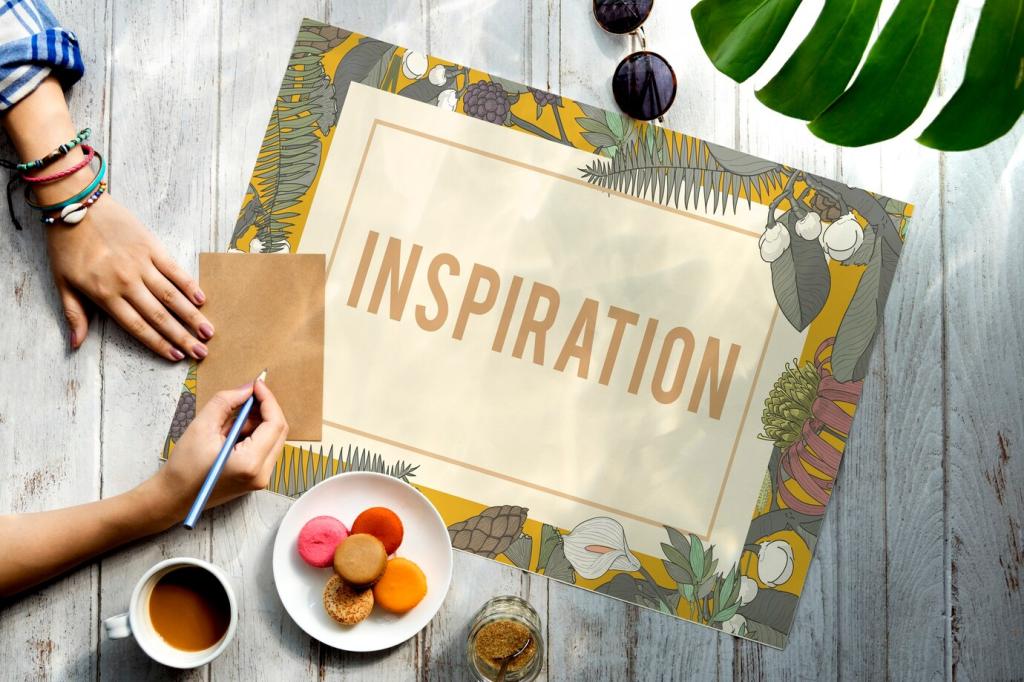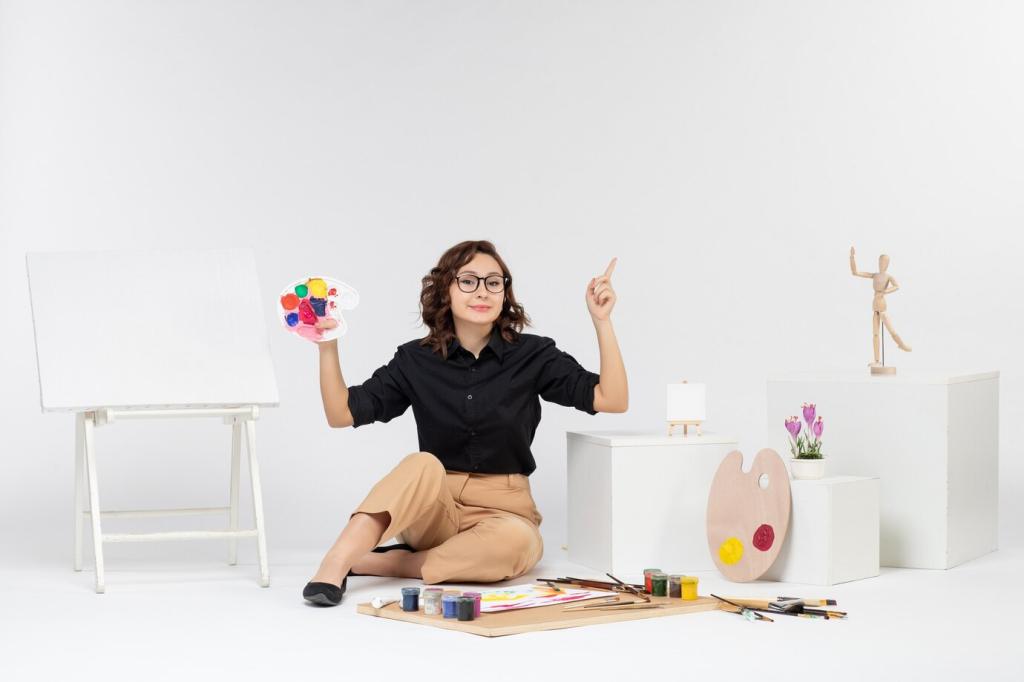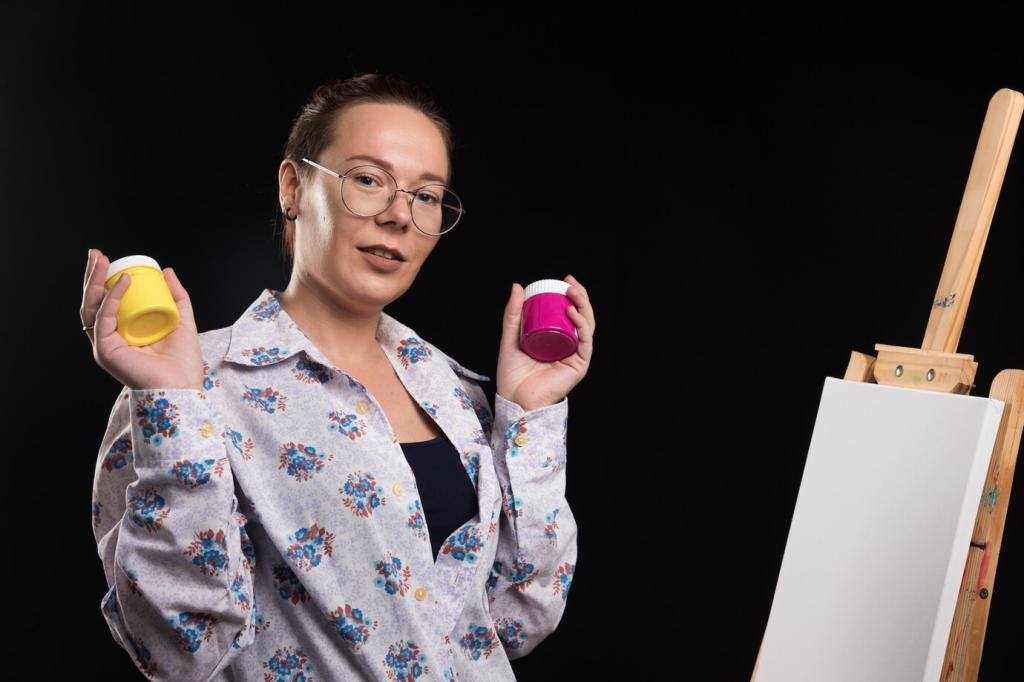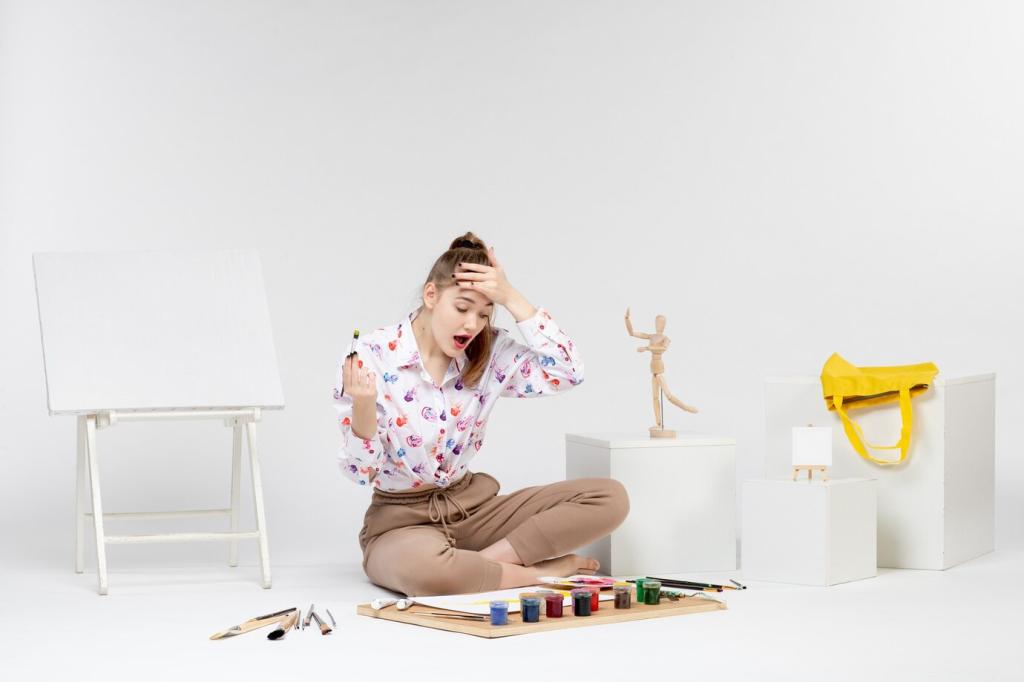Techniques to Release Tension
Cradle clay in your non-dominant hand. With each pinch, inhale gently; with each smooth, exhale longer. Keep edges thick so mistakes feel safe. Ten rounds is enough. Post a photo of your favorite wobble as a badge of calmer progress.
Techniques to Release Tension
Roll a long coil slowly, matching its length to one lingering worry. As you stack, imagine giving that thought supportive structure. Seal seams with water and kindness. Notice how order replaces churn. Comment which metaphor helped: basket, lighthouse, or pathway.




